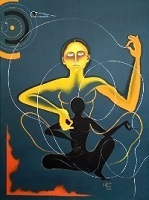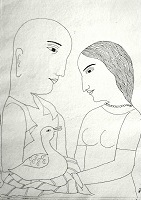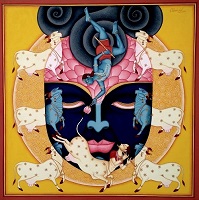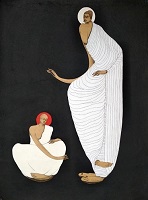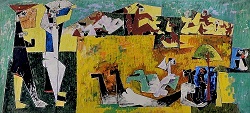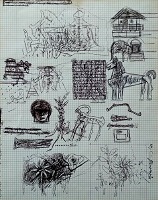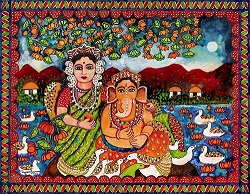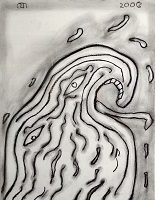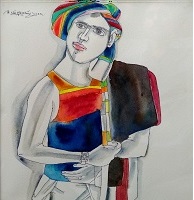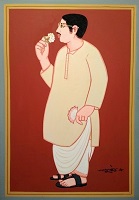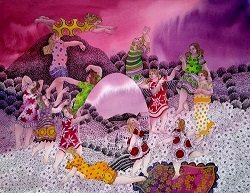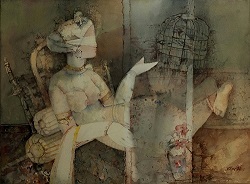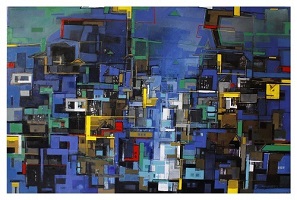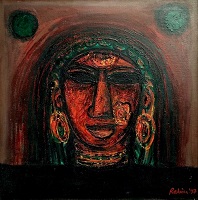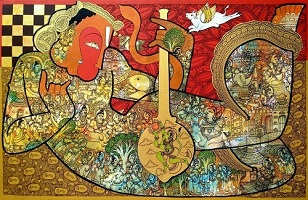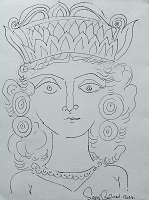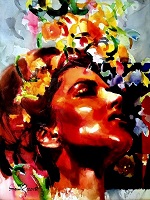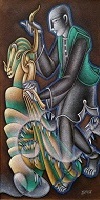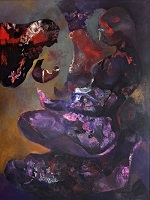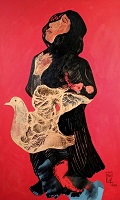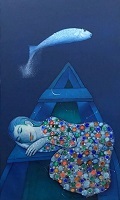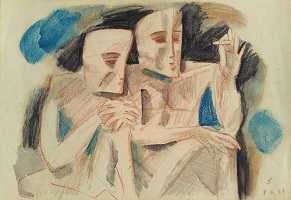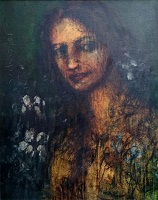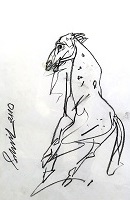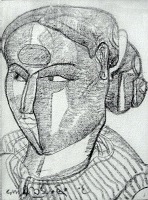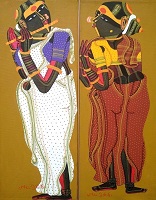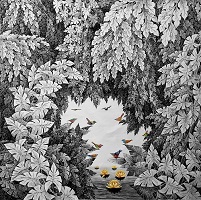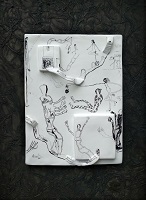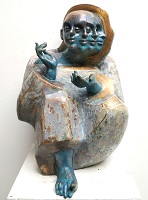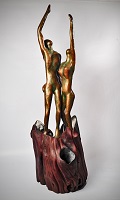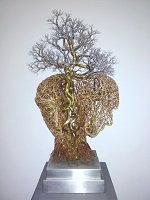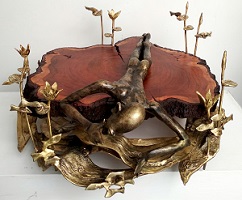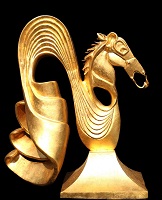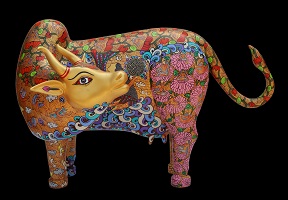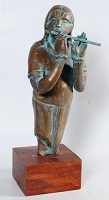Celebrating Diversity
The history of story-telling reminds us how details continue to change over time but the essence remains the same and continues to attract us for generations without end. Even when you turn a story on its head as Shakespeare did with the Jataka of King Shivi in his play Merchant of Venice, the issue that justice must be done remains unchanged.
In the same way, while colonial art was expected to be structured in the framework of academic representation of our ancient epics from a European point of view, the art of independent India broke away from these rules and told their tales in many different ways. Some of our artists, like Satish Gujral took up the emotive theme of the conquering horse, and replaced it with a sense of the escaped stallion, others like Sunil Das and Pradip Maitra picked up the race-horse and war-horse, seeing it reduced to a beast of burden when it was no longer needed. But in the field of visual expression they both blend into the same image of the perseverance of this domesticated animal over centuries.
The remarkable way in which resilience and hope emerge triumphant in our contemporary art is something remarkable. G. R. Santosh is able to raise the day to day life of our rural people to the level of the grandeur of the beneficiaries of a newly independent country, while Arpana Caur highlights the power of love as the essence of our capacity to overcome the limitations that life imposes on us, and Ramesh Gorjala fills the form of Hanuman with his aura of divinity encompassing so many deeds of sacrifice and valour that inhabit the world of our puranas. A number of the works in this exhibition reflect different solutions that can be looked at for survival in our complicated world of today. Somnath Hore, Suhas Roy`s modern-day Radha, Badri Narayan, Lalu Prasad Shaw, Sidharth, Chhotu Lal and Rabin Mondal highlight the human being as the centre of a natural environment.
In an age of insecurity and oppression that evolves on the basis of this human condition, Shiv Lal Saroha with his figures of fallen women achieving nirvana, the stout peasant resisters of T. Vaikuntam and K Laxma Goud challenge our conventional thinking, Arun Pandit and Shabir Hussain Santosh then raise these vulnerable beings above their condition. They appeal to our sensitivity to respect the humanity of these people negotiating this dangerous world with self-respect and honour. In fact, the human figure permeates our aesthetic consciousness as nothing else does. It is even carried to its geometric dimension in Michael Angelo`s, Man in a circle can be seen as a bindu or a series of chakras in our tradition of art. This element is clearly visible in the works of Sakti Burman, Datta Bansode, Jayasri Burman, Samir Mondal, Biman B Das, Ashok Talwar and Dimpy Menon.
But nature rises up like the waves in the drawing of Jogen Choudhury, the trees of Dhananjay Singh, the cow of Seema Kohli or the framework of our seemingly unchanging environment that is shown as being a remarkable harmony of change and continuity in the works of Ganesh Pyne, Bikash Poddar, Akash Choyal, Maya Burman, Praveen Kumar, Sisir Sahana and Umakant Kanade.
What is remarkable is how all these works of different artists with very different types of engagement with the world around us bring us to a common understanding that problems are created and coped with by the human condition. But applying all our strength and resilience to resolving them is bound to succeed in the long run. This faith in a better future, clothed in a sensitive approach to visual harmony, the vibrancy of line and the symphonic use of colour combine to give our viewer a sense of hope and joy that we wish to communicate to you as the essence of our story telling.


